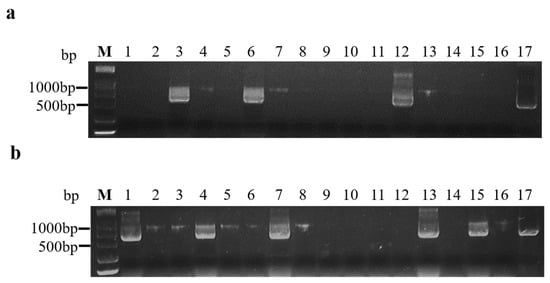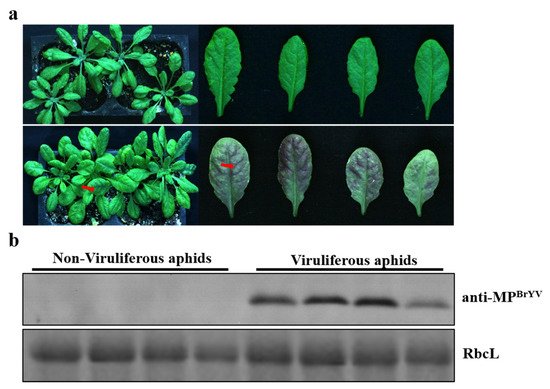For plant virology research, virus preservation and utilization are very important
[12][13]. Plant viruses in the
Polerovirus (family
Luteoviridae) cause emerging diseases that have serious economic consequences for many staple, vegetable, ornamental, and fruit crops, and the transmission by aphids is classified as persistent, circulative, and non-propagative
[14][15][16]. Convenient tests to determine viral acquisition and transmission have not been available owing to the lack of viral inocula preservation. Therefore, it is important to explore a simple method for
Polerovirus preservation and transmission. The technique presented here easily allows virus preservation and transmission by using transgenic plants and frozen infected leaves harboring the viral genome. The purpose of preservation is not only to maintain the infectivity of the virus, but also to eliminate mutations and contamination.
In this research, a very simple and feasible method was established using transgenic
A. thaliana harboring the full-length BrYV genome and frozen infected leaves for aphid feeding and transmission. Previous research by Franco-Lara showed that PLRV genomic RNA transfers into common tobacco and potato, in which the viral genomic RNA and proteins undergo replication and translation. Furthermore, aphids (
M. persicae) fed on the transgenic tobacco plants readily transmit PLRV to test plants, and the inoculation efficiency of five aphids present for 3 days was approximately 71%
[17]. Boissinot extracted the virions from TuYV-infected plants, fed them to aphids, and then used 10
M. persicae (Sulzer) for 4 days for inoculations
[18]. However, the method is technically demanding and requires viral purification equipment and instruments. In this study, six aphids (
M. persicae) feeding in BrYV-transgenic
A. thaliana for 2 days resulted in a transmission rate of up to 100% (
Table 3), indicating that aphids can readily acquire the virus from transgenic
A. thaliana plants. More conveniently, BrYV-transgenic plants may be germinated from transgenic
A. thaliana seeds at any time for aphid feeding. The survival rate of aphids fed frozen diseased leaves was 58.89%, which was lower than that of aphids fed on the fresh infected leaves and fresh healthy leaves. Although the materials subjected to freezing conditions may affect aphid survival, there were no significant differences in the aphid viral acquisition rates (
Table 2). The greatest survival rate for
M. persicae occurred after feeding on detached fresh infected leaves, perhaps because detached leaves infected with the virus had a lower water-loss rate. However, transmission rates for aphids fed on the frozen infected leaves were lower than those fed on the fresh infected leaves, indicating that viral acquisition form the frozen samples was difficult (
Table 2). Zhou’s previous work showed no significant difference in viral transmission between the SBPH fed on frozen or fresh infected rice leaves. The infected rice leaves had been preserved at −70 °C for 45 and 140 days
[19]. Shikata et al. (1977) also showed that SBPH acquires viruses from 232-day frozen leaf tissues of RBSDV-infected rice leaves
[20]. In this research, a single aphid acquired the virus from fresh infected leaves and 270-day frozen infected leaves, revealing a simple and feasible method for viral acquisition by aphids at any time, and the infected plants could be preserved at −20 °C for at least 270 days. This work may be further improved by feeding aphids on BrYV-infected leaves stored at −70 °C.
Agrobacterium tumefaciens-mediated viral inoculation of
A. thaliana and virus genomic transgenic plants may serve as a viral source for aphids that could successfully transmit it to its natural hosts. Because Polerovirus-infected plants are very difficult to preserve, this method overcomes the technical bottlenecks of viral transmission and preservation, and it can be used for screening resistant host varieties and for genetic analyses of a variety’s resistance to BrYV.


